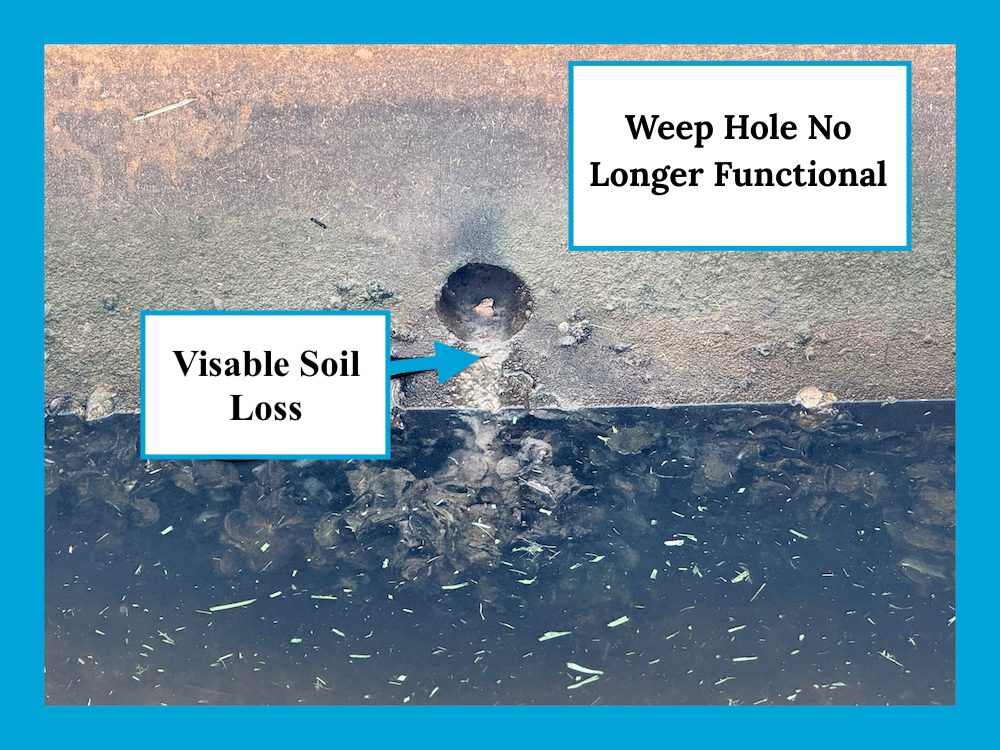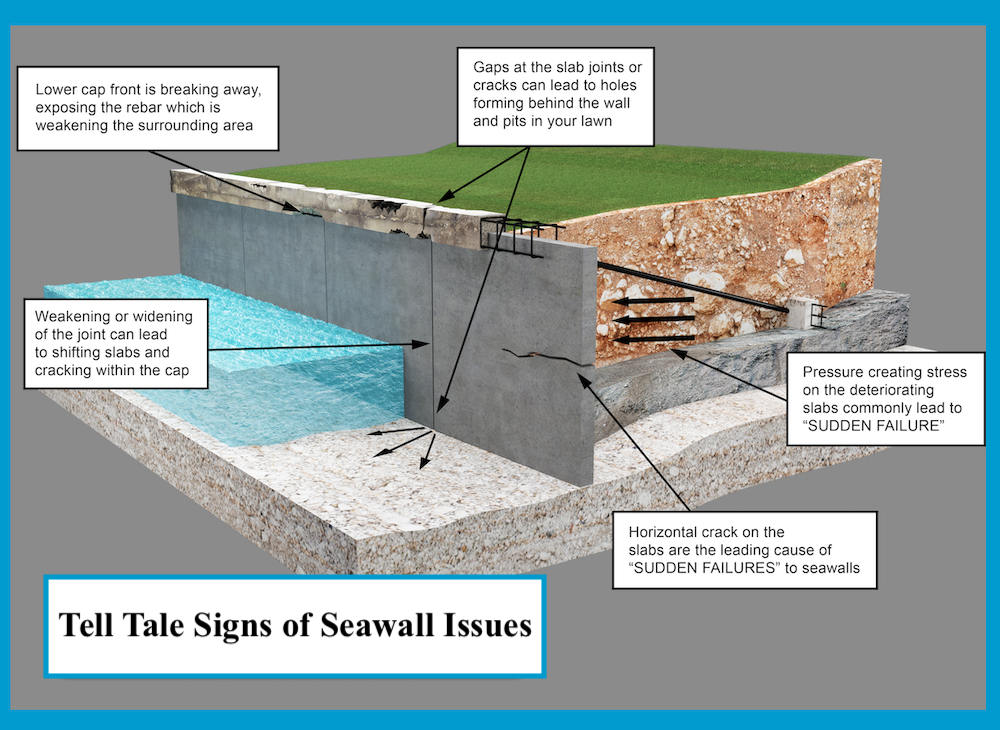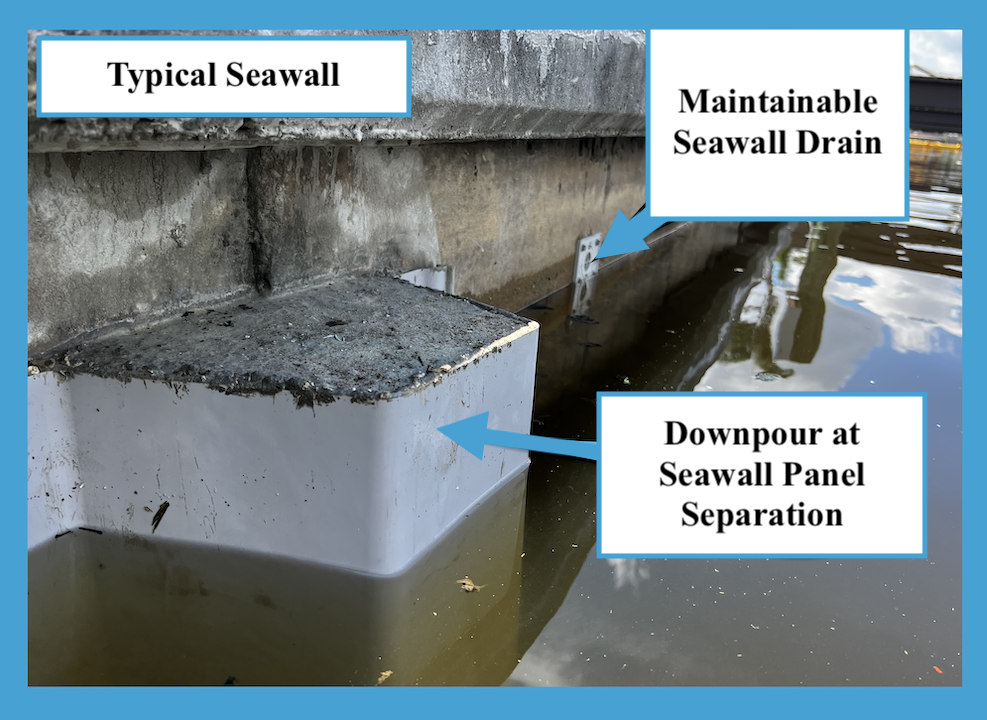Protect your waterfront with expert seawall erosion repair in Florida. Learn to spot damage, explore innovative fixes, and implement preventive measures.
In Florida, seawalls are essential for protecting coastal properties from erosion, storms, and rising tides. This guide from Seawall Savers explains different levels of seawall erosion, how to spot damage, why quick repairs are important, and advanced ways to strengthen your seawall.


Seawall Erosion: Understanding the Causes
Seawall erosion refers to the deterioration of protective materials meant to shield coastal properties from environmental stresses. In many cases, the filter fabric has deteriorated or was installed improperly.
Degradation of fabrics, seawalls experiencing settlement and old age all contribute to the formation of voids and sinkholes.

Sinkholes behind seawalls are serious indicators of erosion that can threaten the stability of the structure. Identifying these depressions early and implementing targeted solutions is crucial for maintaining seawall integrity. Seawall Savers effective strategies include thorough inspections, reinforcement techniques, and prompt repair measures to address and mitigate sinkhole-related damage.

Sinkholes behind seawalls are serious indicators of erosion that can threaten the stability of the structure. Identifying these depressions early and implementing targeted solutions is crucial for maintaining seawall integrity. Seawall Savers effective strategies include thorough inspections, reinforcement techniques, and prompt repair measures to address and mitigate sinkhole-related damage.
Identifying Sinkholes Behind Seawalls
Sinkholes behind seawalls are serious indicators of erosion and structural issues. To accurately identify and address these problems, consider the following factors:
1. Uneven Ground or Surface Changes
2. Water Accumulation or Drainage Issues
3. Vegetation Changes
4. Soil Erosion or Displacement
5. Structural Instability
Monitoring these factors can help in early detection and effective management of sinkholes, ensuring the continued stability and effectiveness of your seawall.

Effective sinkhole repairs behind seawalls are crucial. Key factors include:


At Seawall Savers, we ensure seawall integrity through a precise repair process:
Contact Seawall Savers today to schedule your comprehensive seawall inspection and safeguard your property from erosion.
Explore our expert guide on seawall erosion repair in Florida. Learn to identify damage, understand repair processes, and discover innovative solutions to protect your waterfront property.
Questions about your seawall repair options? Contact our office today for a FREE estimate. We welcome the opportunity to review your seawall needs and earn your business!
(239) 284-6830